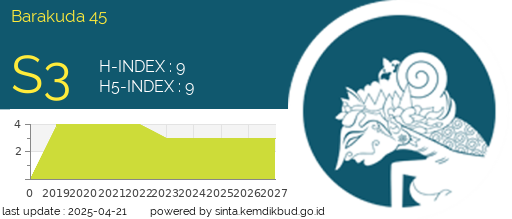The Abundance and Community Structure of Phytoplankton in the Ir. H. Djuanda Reservoir Following the Implementation of the “Citarum Harum” Program
Abstract
The Ir. H. Djuanda Reservoir in Purwakarta Regency is one of the priority areas in the implementation of the Citarum Harum programme, which focuses on restoring the environmental quality of the Citarum River. This study aims to determine the abundance and community structure of phytoplankton in Ir. H. Djuanda Reservoir after the implementation of the Citarum Harum Programme. This study used purposive sampling method at 11 stations in Ir. H. Djuanda Reservoir in August 2024. Phytoplankton abundance was measured based on APHA and community structure was analysed using ecological indicators including diversity, variability and dominance indices. Water quality assessment was determined using the STORET method as the analytical instrument. Statistical analyses were also conducted to assess differences in phytoplankton abundance between stations. The results showed that the phytoplankton community in Ir. H. Djuanda Reservoir during the study consisted of five classes and 31 genera with low diversity and evenness and no dominance. Phytoplankton abundance ranged from 389,048 - 710,536 cells/L and differed between stations (P<0.05). The relative abundance of Cyanophyceae (46.60%) was almost equal to Chlorophyceae (43.45%) indicating a change in the environment for the better. This study is expected to be one of the references for monitoring and evaluation materials for the implementation of the Citarum Harum programme as empirical evidence that there has been a change in the water quality status of Ir. H. Djuanda Reservoir from heavily polluted to moderately to lightly polluted.
Copyright (c) 2025 Agus Arifin Sentosa, Astri Suryandari, Abdul Hadi, Didha Andini Putri, Andi Perdana Gumilang, Dyah Ika Kusumaningtyas, Rakhmat Sarbini, Evi Susilawati, Santoso Dwiatmojo, Andika Luky Setiyo Hendrawan, Iswari Ratna Astuti

This work is licensed under a Creative Commons Attribution-ShareAlike 4.0 International License.



















